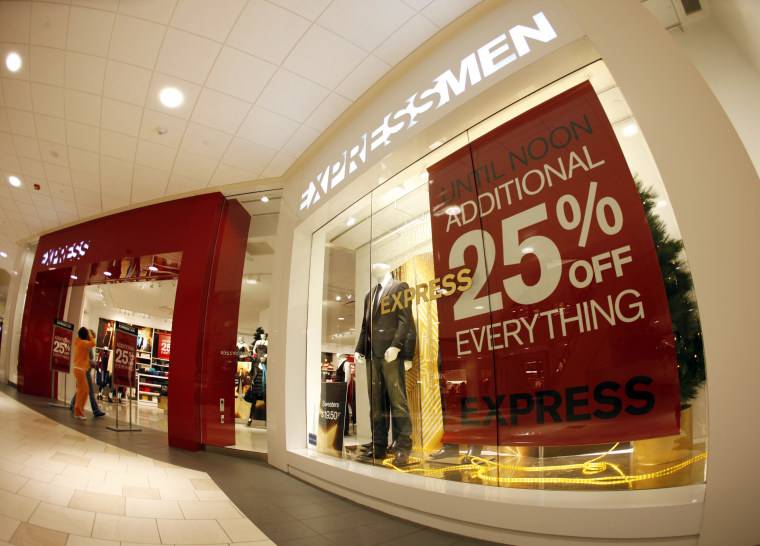While legacy department stores like Macy's and J.C. Penney are shuttering locations, off-price stores like T.J. Maxx are growing their brick and mortar presence.
In March alone, T.J. Maxx (which already has upwards of 1,000 stores), is opening in a slew of new locations. The discount retailer, which declined to comment, has good reason to be optimistic: According to its last earnings report, its 2016 sales topped $33.2 billion, an increase of 7 percent.
Other off-price retailers are also raking it in. Ross Stores saw net earnings increase 14 percent to $301 million in 2016, and fourth-quarter sales grew 8 percent to $3.5 billion. In the same time period, Burlington saw net sales spike 9.4 percent. Nordstrom's fourth quarter earnings for 2016 showed an increase in net sales of 5.2 percent.
The success of off-price retailers appears to be directly — and negatively — impacting the success of traditional department stores.
Related: J.C. Penney to Close 140 Stores
"Discount stores have been growing more rapidly than traditional retail formats — especially T.J. Maxx and Nordstrom Rack," said Madeline Hurley, lead analyst at IBISWorld. "It's been hurting the department stores industry, which is expected to continue to decline."
Jason "Retail Geek" Goldberg of Razorfish says that over the last five years, off-price retailers have seen an average 7 percent growth — and is accelerating — while traditional department stores have been seeing an average decrease of 7 percent a year and are shrinking.
"There's a direct correlation there," noted Goldberg.
Department Stores Are Catching On
So, why is Nordstrom doing so well? Well, keep in mind that the brand is including the performance of its off-price venture, Nordstrom Rack, in its figures.
"Nordstrom Rack is what is carrying Nordstrom right now; other department stores see that and are doing the same," said Goldberg.
Amid sluggish sales and a sweep of store closures, Macy's launched its own off-price project, Backstage.
"Macy’s absolutely is taking on off-price retailing by launching Backstage," said Palash Misra, director at Stax, a strategy consultancy firm, adding that the company has plans to open 50 Macy's Backstage stores.
It's Not Just Discounts Driving Off-Price Success
Off-price retailers sell new, often designer products at a reduced price, and the deep discounts are a big draw. But that's not the sole reason these stores are prospering. Other factors such as location, size, and the thrill of the hunt come into play.
"T.J. Maxx and [other off-price retailers] operate smaller, more efficient stores and buy inventory selectively and closer to need, [which] all contributes to superior profitability versus legacy department stores," said Barbara Miller, portfolio manager at Federated Investors.
Related: So Which Are America's Favorite Stores?
"As department stores shut locations, off-pricers are well positioned to maintain market share growth. This is particularly relevant in smaller cities and towns where, if a Macy's or Sears or J.C. Penney shutter, the off-price retailer becomes the 'go to' store. Vendors need them (to distribute goods), and customers love them."
Plus, one never knows exactly what is available in store, or for how long a particular item will be in stock. There's an element of mystery and surprise involved.
"Because [off-price stores] are so popular, inventory moves quickly, so shopping at an off-price outlet means a new experience every time," said Mona Bijoor, founder and CEO of JOOR, a wholesale marketplace.
Capturing Millennials
The combination of low prices and the thrill of the bargain hunt appeals to the millennial shopper, who tends to be both shrewd and adventurous.
"Millennials are cost-conscious by nature," said Misra. "Joining the labor force during and after the recession has heightened their frugality, and off-price retailers have been able to tap into that consumer need and outperform other retail categories."
Related: Despite Declining Sales, Do Shoppers Still Prefer Brick-and-Mortar Stores?
And though millennials love to shop online — where often they can access those killer savings with the most convenience — they're partial to the idea of "experience." Sure, an afternoon in a Nordstrom Rack isn't exactly as Instagram-worthy as a trip to Tahiti, but it can be surprising and rewarding. Plus, you're not just shopping; you're hunting.
"Off-price retailers are able to deliver shopping experiences that provide more of a treasure hunt than a traditional shopping trip to a department store," said Misra.
And though they're not much for e-commerce, off-price retailers are pretty savvy on social media. T.J Maxx’s Instagram tends toward a distinctly millennial feel.
"[Off-price retailers] are doing a better job connecting with millennials through all channels, including Snapchat, Instagram, Twitter, Facebook, radio, print, and TV," said Trent Silver, CMO at CashForPurses.com. "Millennials make up one-third of the population; the brands that embrace them and communicate with them will win."
Possible Challenges Ahead
Off-price retailers may be doing well now, but we could see a drop-off soon as the vendors that sell to them pursue other options. Typically off-price retailers are selling "distressed inventory," stuff that more expensive stores can't or no longer want to sell.
"Retailers are starting to know better than to sell to a retailer that's competing with them," said Goldberg. "Excess inventory is more likely to be shipped to Brazil or another global market. Off-price retailers will have to work harder to get those good deals."
